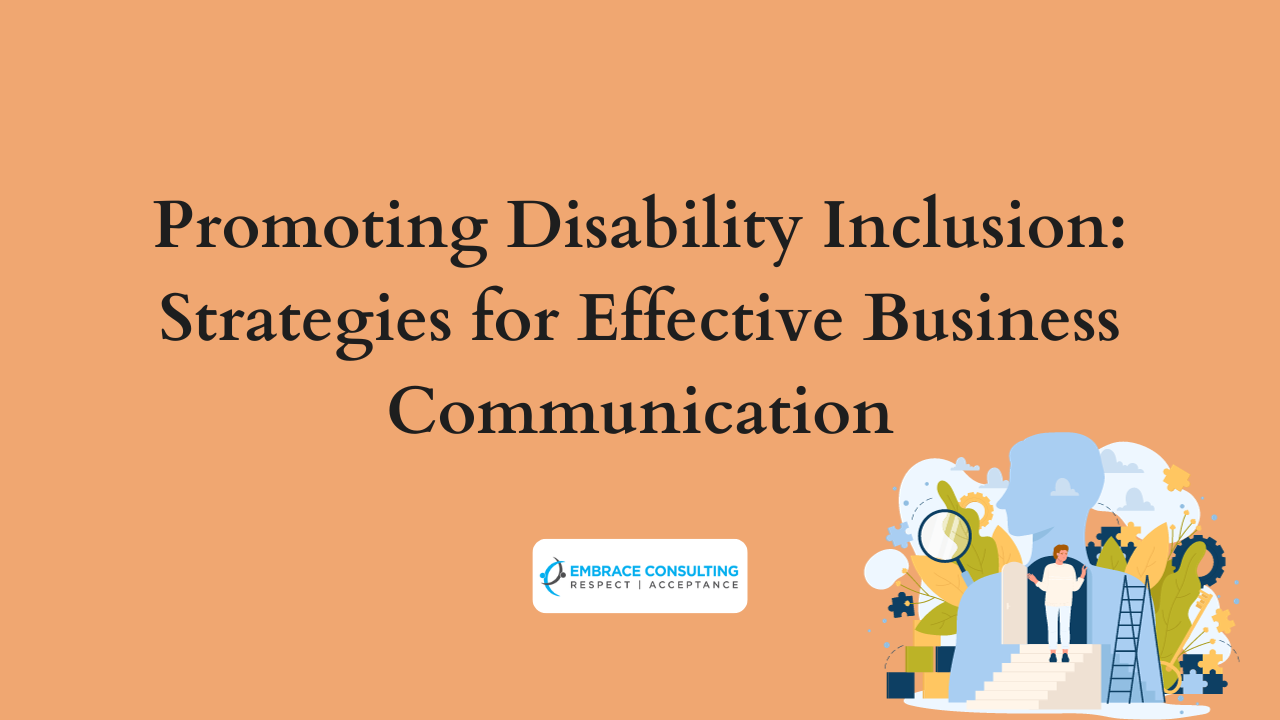In our rapidly evolving business landscape, the importance of promoting disability inclusion cannot be overstated. Creating an environment that embraces individuals with disabilities is nair max 95 sale nike jordan paname nike jordan 11 cmft yeezy azul cheap sex toys ann summers sexy underwear air jordan 1 retro high og ann summers sexy underwear best human hair wigs yeezy shoes for sale durex extra time price sexy ladies night wear durex skin feel adidas juventus 22 23 cruz azul jersey 2023ot only a matter of ethics but also a wise business move. Central to this endeavor is effective communication. Both internal and external communications play crucial roles in fostering disability-inclusive workplaces. This article explores strategies to address communication challenges faced by people with disabilities and offers insights on how businesses can convey their commitment to disability inclusion.
Addressing Communication Challenges
Efforts to ensure accessible communication for disabled members must be underpinned by a commitment to inclusivity and awareness of accessibility principles. A proactive approach to adapting and evolving communication practices is essential to effectively meet the needs of disabled members. Collaboration with disability advocacy groups and seeking input from disabled individuals can be invaluable in overcoming these challenges and fostering a more inclusive environment. However, there are several hurdles to be encountered:
1. Diverse Disabilities: Addressing the diverse needs of individuals with mobility, sensory, cognitive, or communication impairments can be challenging.
2. Lack of Awareness: Many organizations and individuals may lack awareness of accessibility requirements and the specific needs of disabled members.
3. Technological Barriers: Some disabled individuals may face difficulties in accessing or navigating digital content, websites, or communication platforms.
4. Cost Implications: Implementing accessibility features, such as adaptive technology or sign language interpretation, can incur additional costs.
5. Communication Complexity: Effective communication may require alternative formats like Braille, audio descriptions, or easy-to-read materials.
6. Attitudinal Barriers: Negative attitudes or biases towards disabled individuals can hinder efforts to promote accessible communication.
7. Language and Cultural Sensitivity: Consideration of cultural and linguistic diversity among disabled members is crucial.
8. Limited Resources: Smaller organizations or communities with limited resources may struggle to invest in accessibility initiatives and may require external support or funding.
9. Training and Education: Training staff and members on accessible communication practices can be challenging, requiring ongoing efforts to raise awareness and build skills.
10. User Feedback: Gathering feedback from disabled members to continually improve accessibility can be a logistical challenge but is essential for making meaningful improvements.
Internal Communication: Building a Disability-Inclusive Workplace
Internal communication is just as crucial in promoting disability inclusion. The strategies identified for external communication can also be applied internally with additional tactics:
1. Clear Policies: Make policies and procedures related to disability inclusion easily accessible and transparent to all employees. This clarity ensures that everyone is aware of the organization’s commitment to inclusion.
2. Employee Resource Groups: Establish employee resource groups (ERGs) specifically for staff with disabilities. ERGs create a supportive network and serve as platforms for sharing experiences and insights.
3. Accessibility Within: Internal communications, such as emails and company announcements, must also be accessible. This ensures that all employees can access and engage with the information provided.
4. Disability Etiquette Training: Offer training on disability etiquette and inclusion to all staff. This education promotes a culture of understanding and respect, fostering better interactions within the workplace.
External Communication for Disability Inclusion
To effectively communicate disability inclusion externally, organizations should consider the following strategies:
1. Representation Matters: Incorporate individuals with visible disabilities in your advertisements and other public-facing materials. This sends a powerful message of inclusion and reflects the diversity of your customer base.
2. Language Matters: Employ person-first language, focusing on the person before the disability. This demonstrates respect and acknowledges individuals as more than their disabilities.
3. Accessibility is Non-Negotiable: Ensure that all public materials, including websites and documents, are fully accessible. Accessibility should be a fundamental consideration in your communication strategy.
4. Collaborate with Disability Organizations: Reach out to disability-focused organizations for partnerships and guidance. These collaborations can provide valuable insights and resources for effective disability inclusion.
By implementing these strategies for both external and internal communication, businesses can enhance their attractiveness to individuals with disabilities, showcase their commitment to inclusion, and build a workplace where everyone feels valued and empowered. In the journey towards disability inclusion, effective communication is a pivotal step that paves the way for a more diverse and equitable future.



